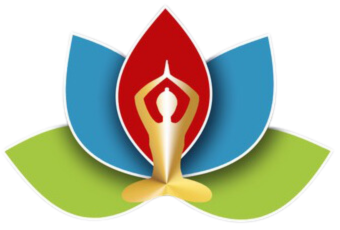Ayurvedic doshas – Vata, Pitta, Kapha: what they mean and how to bring them into balance
Ayurveda does not describe people with rigid categories, but with living forces that shape you day by day: Movement (Vata), Transformation (Pitta) and Structure (Kapha). These three doshas determine how you think, eat, sleep and work – and how you feel when life wants more than you would like. Everyone has all three doshas within them, just in their own weighting; this is precisely why you react differently to stress than your girlfriend, tolerate cold smoothies worse than your colleague or thrive in the summer heat, while others lose their patience at 24 degrees.
If Vata takes the helm, you feel lightness and fireworks of ideas, but also the tendency to wake up at night, freeze or go from the hundredth to the thousandth; if Pitta dominates, then you love clear goals, tackle and achieve a lot, only the fuse sometimes gets short and the stomach sours when things get too hot; and if Kapha is strong, then you are reliable, warm-hearted and persistent, but tiredness, heaviness and the famous “tomorrow I’ll get going” can occur more quickly than you would like. Balance doesn’t mean that everything has to be the same, it’s more about understanding your basic constitution and adjusting the daily parameters – food, sleep, pace of work, routines – so that you feel powerful, clear and connected.
How do you find out which dosha sets the tone for you? First of all, it’s worth taking an honest look at patterns that keep recurring: Are you more the creative fast starter with cold hands and a changing appetite (Vata), the focused decision-maker with warmth in the body and sporting ambition (Pitta) or the calm rock with good stamina, a big heart and a love of consistency (Kapha)? And because life is not static, pay attention to the seasons and phases of life: Windy, dry periods increase Vata, summer heat fuels Pitta, damp, cold periods strengthen Kapha – this explains why the same diet works in July and is suddenly “too heavy” in November or vice versa.
What can you do today without turning your life upside down? If Vata is too high, focus on warmth, regularity and easily digestible, cooked meals; eat without distraction, drink warmly, plan breaks and end the day with something that grounds you – perhaps a short walk or a warm foot bath. If you have a lot of Pitta, cool heads and mild spices help: not too hot, not too late, but enough water and small islands in everyday life where you don’t have to prove anything. And if Kapha is overweight, awaken your inner spring: eat more lightly, exercise regularly, start your mornings warm and stimulating and set small, clear tasks in between that really get you going instead of getting lost in “I’ll start later”.
You may recognize yourself in several descriptions – this is not a mistake, but normal, because mixed types are part of everyday life, not an exception. Ayurveda always looks at the person in front of you, not the theory in the book; this is precisely why a consultation is not about pinning you down to “Vata” or “Pitta”, but about reading your personal mix and finding out together where you can achieve the greatest effect with small, loving corrections. Sometimes it’s the late screen time that makes Vata dance, sometimes it’s the “quick” spicy meal between two appointments that overheats Pitta, and sometimes it’s the winter rhythm that makes Kapha too cozy – the levers are often unspectacular, but effective if they suit you.
So that you don’t guess, but know, I invite you to explore your dosha focus with a short self-test. It guides you through key areas – body, digestion, sleep, energy, emotions – and reveals what is currently shaping you. The test is deliberately kept simple so that you can get a feeling quickly; the evaluation explains how to classify the results and which initial steps are useful in the next few days. And of course: it is no substitute for individual advice, but it is a helpful compass that shows you which direction it is worth going in.
A little foretaste so that you can feel how concrete this will be: Do you tend to have cold hands and sudden energy highs with equally sudden lows? Does heat literally choke your patience and does your stomach complain if your meal was very spicy or very late? Do you feel tough in the morning even though you’ve had enough sleep, and does everything get easier as soon as you start moving? If you nodded inwardly at any of these questions, you will like the self-test because it picks up on such observations and organizes them in an understandable way.
In the end, what counts for me – and probably for you too – is not to make everything “perfectly Ayurvedic”, but to shape your life in a way that is good for you, because you know your own logic of energy, peace and enjoyment. Ayurveda does not provide dogmatic rules for this, but sensible principles that can fit into your everyday life. If you would like support, I am at your side; if you want to start on your own, the self-test is a very good first step.
Request Dosha self-test (PDF) free of charge
Simply use the form directly below this text. Enter your name and e-mail address and click on Send – you will receive the “Dosha self-test” as a PDF by e-mail via my MailerLite service. The test is free, data-saving and can be canceled at any time; and if you have any questions afterwards or would like to discuss your results together, please get in touch – we’ll find a time that feels good and really helps you.


